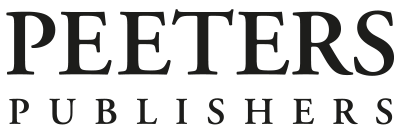

 0
EN
0
EN

It has long been an important issue for many religions, both ancient and
modern, to imagine and question the differences between humans and
deities as well as their means to communicate between each other.
Ancient Near Eastern texts and iconography conceive this relationship in
more than binary terms (i.e., human vs. divine): they presume the
existence of various intermediate and often liminal entities, whom
scholars have usually classified in terms of “angels”, “demons”,
“heroes” etc. According to ancient belief, such beings (some anonymous,
others named such as Pazuzu, Azazel, Gabriel, Metatron, or Satan...)
could take over roles that were considered as unfitting for the gods
themselves; they could act as messengers and intermediaries, or in
contrast even rival the gods. The dead (or at least the prominent among
the deceased, such as kings or prophets) could be considered as
intermediates in their own right, since they were thought to have
special knowledge of a sphere that the living could only imagine
imperfectly. To keep such entities at a distance or to satisfy them and
gain their sympathy could at times prove no less challenging than to
serve the gods. On the other hand, imagining those entities helped
ancient societies and individuals, and particularly the literary elites
among them, to manage and structure the contingencies of the world they
lived in.
The present volume offers the proceedings of an international
symposium, organized by the chair of
«Milieux Bibliques» and held at the Collège de France on 19-20 May
2014, dealing with intermediate beings as imagined in ancient Near
Eastern societies and reflected in their textual and visual records. The
aim was to get a better sense of how such entities were conceived, what
roles they were attributed and what functions they fulfilled in culture
and society, religion and literature, ritual and belief. The
contributions scrutinize cuneiform and other ancient Near Eastern texts,
as well as biblical literature, in order to understand ancient
Mesopotamian, Levantine and Israelite conceptions of human-divine
hybrids and intermediaries; other papers address ancient Egyptian,
Jewish, Manichaean, Christian, Zoroastrian, and Islamic sources and
beliefs. In all their variety, and in the variety of the numinous
figures (collectives or individuals, anonymous or named) that are
analyzed, these studies provide vivid insights into how the ancients
experienced and modeled the reality they lived in when mobilizing
human-divine intermediates for their own concerns.



